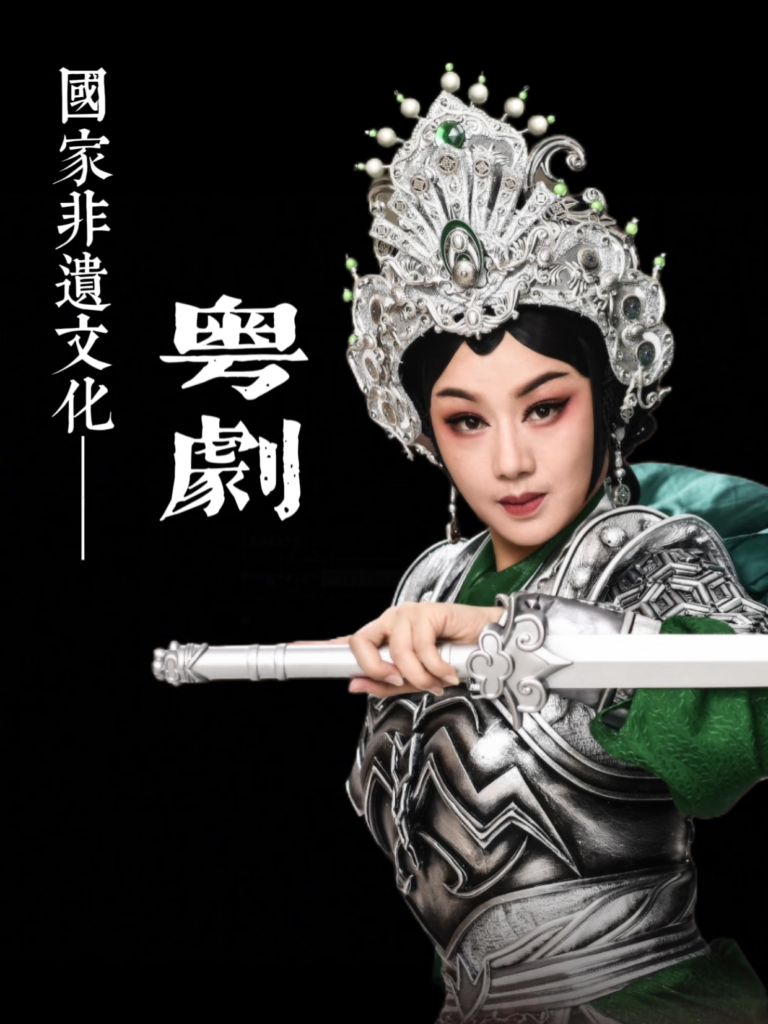
I. What Is the Opening Sample in Blueprint Supreme?
The track Blueprint Supreme begins with an evocative and ethereal line: “雾烟暗遮世外天”, which translates to “Misty smoke veils a world beyond the mortal realm.” This line isn’t just a poetic flourish—it’s a direct sample from the celebrated Cantonese opera aria “Fragrant Sacrifice” (《香夭》) from the opera The Flower Princess (《帝女花》).
This lyric captures a moment of haunting serenity—an imagined paradise that masks an impending tragedy. In the opera, this line is sung as the two lovers prepare to end their lives together. It reflects a final, fleeting escape into beauty before death, lending the sampled moment both elegance and emotional gravity. For listeners unfamiliar with the reference, this single line holds centuries of meaning, layered with themes of love, loyalty, and farewell.
II. What Is The Flower Princess About?
The Flower Princess is one of the most iconic works in Cantonese opera. It tells the story of Princess Changping, daughter of the last Ming emperor, and her lover Zhou Shixian, a loyal court official’s son. As the Ming dynasty collapses, Changping survives a massacre and finds refuge in a Buddhist convent, living in seclusion. Years later, she is reunited with Zhou.
Although they long for a peaceful life, the world around them has changed. In a final act of love and loyalty to their fallen dynasty, they ask the new Qing emperor for two wishes: a proper burial for the Ming royal family and their own marriage before death. After their request is granted, they marry and, beneath a flowering tree, drink poison together—choosing death over betrayal.
The opera is both romantic and tragic. It honors love not just as personal devotion, but as something intertwined with dignity, legacy, and national identity. The “Fragrant Sacrifice” aria, from which Blueprint Supreme draws, is sung at this very moment of farewell. It captures the essence of the opera: delicate beauty underpinned by heartbreaking sacrifice.
III. What Is Cantonese Opera?
Cantonese opera is a traditional art form celebrated across Guangdong, Hong Kong, Macau, and many overseas Chinese communities. Rich in symbolism and deeply embedded in Cantonese identity, it combines music, dance, drama, martial arts, and poetry in one cohesive performance. In 2009, it was recognized by UNESCO as part of the “Representative List of the Intangible Cultural Heritage of Humanity.”
1. Origins and Development
Cantonese opera emerged during the late Ming and early Qing dynasties. It evolved through the integration of Kunqu, Yiyang, Bangzi, and local folk styles. Over centuries, it matured into a sophisticated theatrical tradition and remains one of the most cherished forms of Chinese opera today.
2. Artistic Characteristics
- Singing Style: It uses a blend of traditional vocal forms, particularly Bangzi and Erhuang, often enhanced with regional tunes such as “Dry Thunder” or “Starving Horse Shakes Bell.”
- Performance Style: It emphasizes symbolic gestures, elegant posture, and stylized movement. Martial arts and dance often enhance the narrative.
- Costume & Makeup: Roles wear elaborate costumes adorned with embroidery and color-coded symbolism. Makeup is dramatic—red signifies loyalty, black integrity, white cunning. Every color tells part of the story.
- Role Types: Each performer specializes in a specific role category, such as:
- Sheng (male lead)
- Dan (female lead)
- Jing (painted face)
- Mo (older male)
- Chou (comic character)
3. Signature Repertoire
Among the most beloved operas are The Flower Princess, The Purple Hairpin, and adaptations of The Peony Pavilion. The aria Fragrant Sacrifice from The Flower Princess remains a cultural touchstone—its melody and words are widely recognized, even beyond opera circles.
Conclusion: Why Does This Sample Matter?
The sampled lyric in Blueprint Supreme is far more than a beautiful sound. It’s a doorway into the soul of Cantonese opera—a centuries-old tradition that captures the heart and spirit of Chinese culture. Through one single line, listeners are invited to experience a story of love and loss, of courage and conviction.
In a modern musical context, this ancient echo becomes something fresh, yet timeless. It shows that tradition and innovation are not opposites—they’re partners in preserving and reimagining the stories that continue to shape identity and emotion. Understanding this reference enriches the listening experience, reminding us how deeply a single note can resonate when it carries the weight of history and heart.